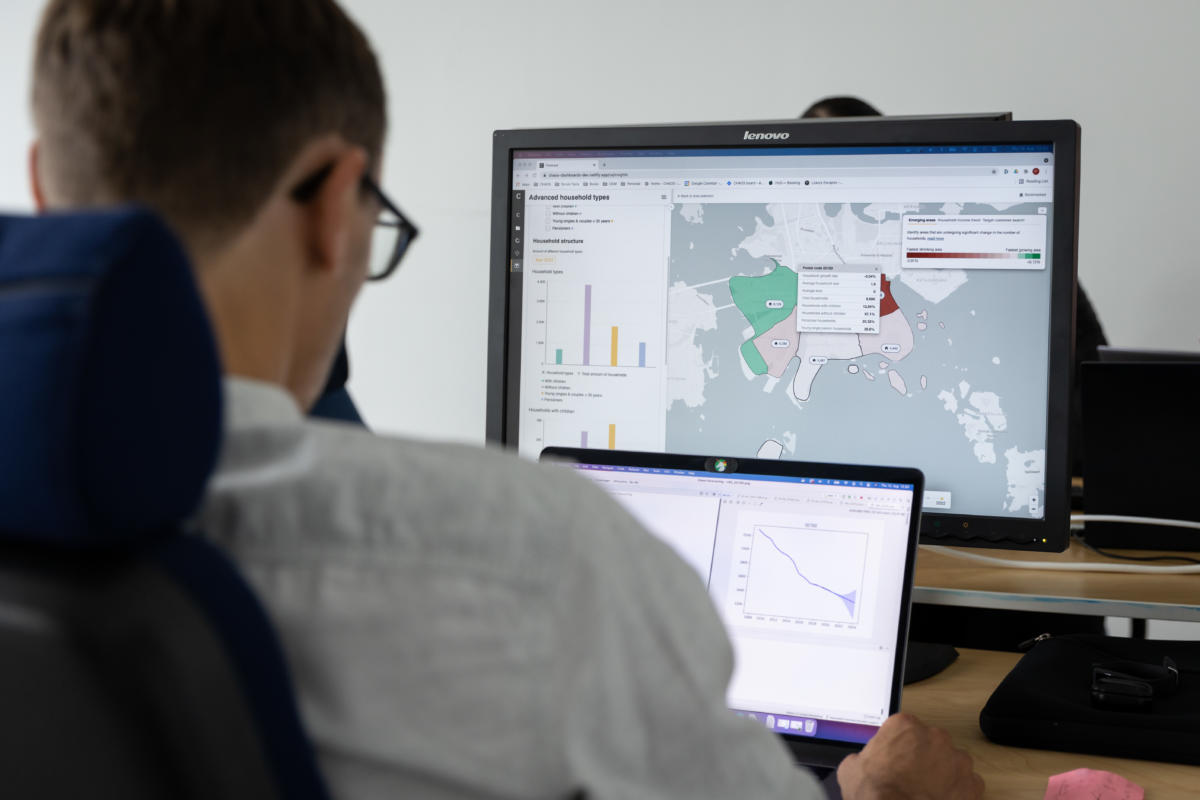
Forecasting helps us with smart urban sustainability
Forecasting is a process of using historical data to make informed predictive estimates about the future. If used correctly, it can help us design more liveable sustainable, antifragile cities.
Helsinki is one of the fastest-growing areas in Finland. According to the City of Helsinki, the population will reach 700 000 by 2027, and exceed 860 000 by 2060. Simultaneously, the cost of housing is skyrocketing all around Helsinki. So has the need for new apartment production. Areas close to Helsinki city center, such as Kalasatama, Ruoholahti and Arabia, have already been explored. This has directed real estate investors to seek out opportunities in other areas. One of these areas is Pakila.
A while ago, attention was drawn to Pakila when Helsingin Sanomat published an intriguing article. Encouraged by this, we decided to take a closer look at Pakila to better understand why real estate investors are showing interest in the area.
Pakila is a green and vibrant detached house area, relatively close to the Helsinki center. It has great outdoor possibilities close by, such as Helsinki central park, Paloheinä and Vantaa river bank.

It is no surprise that Pakila is favoured by couples and families with kids (fig. 1), and mature adults who value peace and quiet.
While looking at Pakila from CHAOS’ Dashboard, we noticed that the area does not show similar trends as the surrounding areas. Interestingly, the amount of households in the area has been increasing, whereas the housing production has been decreasing. The closest areas to Pakila area, on the other hand, are showing an increased number of apartments in the area in recent years and a growing trend of 24-35-year-olds moving to the area.
As mentioned in the Helsingin Sanomat article, the presence of real estate investors has raised some discussions and even concerns among the people living in Pakila. The residents want, first and foremost, to protect the green characteristics of the area.
Anssi Virtanen is a Pakila local who has a background in real estate. He knows the area very well and wants to protect the unique feel of the area.
“Pakila has a high demand for houses, apartments and plots. Currently, Pakila has a lot of houses with overgrown plots. The houses in this area were built between 1960 and 1970. Some of these older houses have not been properly maintained and they have plenty of problems and risk structures in them, like moisture or hidden plinths”, says Virtanen.

Indeed, our data shows that Pakila has a lot of housing built between 30-50 years ago (fig. 2, above). The age might indicate that they require some renovation. Virtanen believes that real estate investors can build more modern, healthier houses and freshen up the outlook of the area and housing supply in the area.
Virtanen describes that in Pakila old detached houses are being replaced with two-story semi-detached houses. More houses are built on plots, and this increases the density of the area. Virtanen believes that the city of Helsinki also supports densifying the area since they are granting building permits for contractors.

Virtanen describes that in Pakila old detached houses are being replaced with two-story semi-detached houses. More houses are built on plots, and this increases the density of the area. Virtanen believes that the citWhen we look at our dashboards, Pakila predominantly has 3-4 and 5+ houses and apartments. Studios and 2 rooms are not that present (fig. 3). The data further indicates that the production of new housing in the area might be focusing on smaller housing (such as studios and 2 room apartments).
All of this suggests, that city officials are driving for more dense and efficient Pakila. Instead of density, it could be advisable to also develop more liveable Pakila, where residents can truly enjoy a good urban life.y of Helsinki also supports densifying the area since they are granting building permits for contractors.
When the demand for plots is high, as in Pakila, there is a lot of competition. The competition is also accelerating in Pakila. Real estate investors have generally more resources to compete with the plot prices. In the long run, this might increase the plot prices in an area.
In Pakila, the new contractor-built houses are mainly two-storied semi-detached wood-frame houses with a compact surface area.
“Real estate investors and contractors have traditionally invested in the plots and relied on very basic building solutions. Therefore, the return comes from the plot itself. The solutions are good-looking, of course, but as prices keep rising, investors will increasingly profit from the land”, Virtanen argues.
“Real estate investors and contractors have traditionally invested in the plots and relied on very basic building solutions. Therefore, the return comes from the plot itself. The solutions are good-looking, of course, but as prices keep rising, investors will increasingly profit from the land.”
Virtanen, who is an owner of a geothermal energy company, is also wondering if the contractors are compromising on sustainability to increase the profit. He would like to see a shift towards long-term value creation for housings.
“In my experience, private individuals usually invest in buildings themselves instead of the price of the plot. In Pakila, for example, private individuals have been building spacious detached stone houses. Contractors, on the other hand, opt for cost-efficient solutions, also when it comes to heating. They might, for example, choose district heating, which is relatively cost-effective to build but expensive to use.”

Good transportation and a rich service provision increases the market value of an area. For real estate investors, this is crucial information when considering investment decisions.
Pakila is equipped with good public transportation connections (bus, train in Oulunkylä). Baana and Kehä 1 are just a stone’s throw away, and city bikes are an easy option for sustainable transportation. In the future, Raide-Jokeri will improve connections even further.
Anssi Virtanen agrees that the connections are great. He gets from home to his office in Lauttasaari in just 20-30 minutes.
“Pakila sits in the centre of everything and you can easily get to any direction you want. When we moved from Espoo to Pakila, we didn’t even realize how much impact the central location of Pakila and the great connections have. You can easily get anywhere.”
There is also a downside to the central location. Large highways (Kehä 1, Tuusulanväylä) surround the area, making it noisy at times. Virtanen also hopes city officials could tackle the noise problem by lowering speed limits on the main roads.
“They have been building noise walls but that might not be enough because the roads are relatively close to houses. I think it is also important to retain forests in Pakila since they help further mute the sound of traffic from the main roads”, Virtanen says.

Regarding services, Pakila has a good amount of them (fig. 4, above). There are playgrounds and outdoor sports services, as well as convenience stores and restaurants in Pakila and areas close by. Looking at our dashboard, Pakila might become a more attractive area by increasing the diversity of the services. New, diverse services could also bring new types of residents to the area.
“All in all, Pakila is a great area for families. What we need in this area is a gym. Now you need to head to Tammisto or Alppila because the Helsinki city gym is very much overused. Also, the outdoor sports services could be updated. Torpparinmäki has good additional services that support good living in Pakila. For a detached house area, we have it quite nice here”, Virtanen concludes.
We just looked at the case of Pakila to understand why the area has attracted real estate investors. We at CHAOS believe the cities should be developed for people by people. Our easy-to-use dashboards provide insights about cities, their people, area development, future trends and much more. The data can help make more enlightened business decisions. Moreover, it can help us create more liveable and sustainable cities.
Pakila area is an excellent example of how cities and areas should be developed together with the citizens. Cities need proactivity and two-way communications to reconcile the needs of the different parties.
Our data suggests that Pakila shows different resident trends as the surrounding areas. There are not that many young people in the area. New housing and increasing the diversity of services in the area could help bring younger people to the area.
The studio and 2 room apartments might help attract new people to the area as well. However, it could be also beneficial to build larger apartments to accommodate families with kids – or for those who just want space around them.
Liveable cities are created together. Data and insights can help different stakeholders when making decisions. Hence, it is a pivotal moment for Helsinki city to start developing the Pakila area together with the residents and listen to their needs, opinions and worries.
Artcile’s header image is from: https://kaupunginosat.fi/pakila/kuvapankki/

Forecasting is a process of using historical data to make informed predictive estimates about the future. If used correctly, it can help us design more liveable sustainable, antifragile cities.

Data is everywhere and the amount of data has been increasing exponentially. Still, many businesses rely on old-fashioned measures or base their business decisions on gut feelings instead of data.

In a recent edition of McKinsey’s new series “The Next Normal”, leading executives and McKinsey experts discuss the future of the real estate industry. While